MV Tempest, Red Sea, EgyptContents of this Issue: Our Picks for Top Red Sea Liveaboards Dive Friends, Courtyard Marriott, Bonaire Shore Diving Is Not for Everyone An Interesting Way to Off-Gas in Bonaire Not All Magnifying Glasses Will Spot Critters You? Run Out of Air? Impossible . . . Right? Just How Much Is a Bar, Anyway? A Single Drop of Sunscreen Can Kill Coral Quiet, Please! Marine Noise is Making Fish Deaf Extreme Courage -- and a Good Nose How Did the Maker of Sharkwater Die? Editorial Office: Ben Davison Publisher and Editor Undercurrent 3020 Bridgeway, Suite 102 Sausalito, CA 94965 great diving on a liveaboard we’d never recommend from the August, 2018 issue of Undercurrent
Dear Fellow Diver: Look at a map of the world, and Egypt's Red Sea coast looks closer to the trouble spots of the Middle East than Chicago is to Los Angeles. But I am not scared, and neither are other European scuba divers, who keep coming back. Why? Because it's incredibly inexpensive, the locals are friendly and welcoming to strangers, and it's got some of the best and most wide-ranging tropical diving anywhere in the world. Plus, thanks to huge numbers of unmarked reefs along its borders, the Red Sea is a diver's playground for finning around shipwrecks, dating from the 19th Century to present day, that offer lots to look at, including old toilets . . .
The final reward came as I ascended -- a cargo of plumbing materials, including piles of toilet basins on the saddle between the reefs. That bounty was a spill from the MV Jolanda, a 1980s wreck that has long since tumbled down the reef beyond the reach of divers. (Don't drop anything here. At more than 2,000 feet deep, nobody is going to fetch it for you.) The RIB drivers always knew which way we went and, like clockwork, the boat was waiting there when I surfaced. But whenever they drove us back to the mother ship, I couldn't stop myself from feeling disappointed and yes, a little angry. I had had no hesitation leaving my husband at home and joining a girlfriend and another regular dive buddy for a one-week trip in April with the Tornado Marine Fleet. I had booked with them many times prior because the well-run boats and excellent service made for great experiences, and I was expecting another on their award-winning liveaboard, MV Whirlwind. But as soon as we landed in Hurghada, we were told the Whirlwind had "engine trouble." We were being relegated to another Tornado Marine boat, the MV Tempest, a smaller boat that sleeps 12. There were only eight of us booked -- was that the real reason the 22-berth Whirlwind was not available?
And then things got worse. The on-board compressor was out of commission for the first three days, so they had to constantly transfer tanks by RIB from MV Hurricane, another Tornado Marine boat we motored behind during that time. Heavy work, especially when the sea presented a short chop. For those three days, nitrox was in the mid to high 20s. On the upside, we weren't bothered with a noisy compressor. After our compressor was fixed, the nitrox settled at a steady 32 percent. I know the Egyptian crew from past trips on other Tornado Marine boats, and they did their best to make sure we had a good time, but it was hard for them. Musa has been with Tornado Marine nearly since its beginning, and has developed quite the British sense of ironic humor. As divemaster and cruise director, he has an eagle eye and an aptitude for avoiding hazardous situations like making sure everyone transferred safely to the RIBs wearing full gear when it was required, and ensuring people had dry feet when descending the polished -- and slightly slippery -- wooden staircase to below decks. The aft deck was spacious enough for me to climb in and out of my rigged tank without bumping other divers. But there was a lot of clutter, including lead weights, below the cubbyholes where we put our deck towels, and it proved dangerous -- my buddy stubbed her toe so badly, she discovered after returning home that it was fractured. Fortunately, the compressor was fixed by the time we reached the star of the Red Sea, the SS Thistlegorm, a vast British freighter loaded with war supplies that was sunk at Sha'ab Ali in 1942 by a German aircraft that mistook it for RMS Queen Mary. To avoid the crowds, the Tempest moored over the wreck overnight so that, at first light, we could jump directly from the swim platform, descend a short distance down the mooring line and immediately see the huge shape of the 400-foot-long wreck. The Thistlegorm lies on an even keel, with the deck at 55 feet and bottoming out in the sand at 110 feet. Entering an open hold at 80 feet, I started swimming through and between different decks, marveling at the sheer quantity of equipment lost to the waste of war. With hold covers long rotted away, the open holds have trucks loaded with motorcycles, wings of Gloucester Gladiator aircraft, mobile generators and lots of artillery shells. I even got a peek at the captain's bathtub, located at 80 feet (25m). But it's now been visited by thousands of divers, and they've taken their toll, if not a few illegal souvenirs. Wherever I was in the wreck, I could always see daylight in the 100-foot visibility.
So that I'm spotted right away, I like to strap a surface-marker flag on its extending pole by bungies to my tank, and deploy it as soon as I surface. Unfamiliar with it, the crew had a little trouble rigging my flag at the start; seems they're are not as popular as they should be. When one of the crew asked if I really needed it, Musa was quick to intercede. He knew that with me, if it's no flag, no dive. Another good reason: Because springtime is peak dive season in the Red Sea, raising my flag post-dive at a reef busy with divers meant my buddy and I always got quick service and a deft recovery by the pick-up RIBs. With little distance between dive sites, we could squeeze in four dives, including a night dive, each day. I did 21 dives in six days, including seven wrecks, and each was different from the next.
The Red Sea teems with life, but encounters with mantas, whale sharks and dolphins are still left to chance. Near Hurghada, I got to snorkel close up with three dolphins for 45 minutes. Water temperatures stayed between 75 and 79 degrees, warmer than expected at those latitudes, thanks to geo-thermal vents deep in the seabed. Despite sun and air temperatures in the mid- to high 80s, it was very windy, often up to 30 knots, due to temperature differences between the desert shore and the sea. A trick I learned was to either leave my gear in the RIB for the crew to recover, or if we returned directly to the mothership, climb out of my gear quickly and rush to one of the two aft deck showers where I could take my wetsuit off in the comfort of warm water, while the other divers, all Brits who lived in the London area, shivered on the aft deck before retreating below decks. The wind-whipped waves made for a long and rather uncomfortable journey by RIB to the wreck of the SS Kingston, a mile from where the Tempest moored at the southern end of Shag Rock. Backrolling into the water, I swam around the 19th century remains, marveled at the propeller still in place, and enjoyed the unwanted attentions of striped surgeonfish guarding their territory. Once I got bored, I set off southwards on the prevailing current, through clouds of yellow goatfish, with the reef on my left. A couple of divers actually made it all the way back to the Tempest, but most of us ascended after an hour when we got low on air and were picked up by vigilant RIB drivers, who hauled our gear aboard before we did the same with ourselves -- no ladders here. There seemed to be no limit from Musa to dive times; we normally surfaced after an hour or so. I rarely descended past 100 feet, and away from Ras Mohammed Park, there were never any currents to cause concern. Although it has plankton blooms at times, the Red Sea's visibility is not bettered elsewhere. At 100 feet-plus, the clarity sometimes seduced me into thinking I could go deeper if I wanted to. The Sea is an extremely deep extension of the African Rift, so dead plankton drops away to depth.
The lionfish always hovered near us on our night dives, dashing in to gobble up smaller fishes mesmerized by the beam of our lights. Darkness descended around 6 p.m., so there always was time to squeeze in a 45-minute dive before dinner. Bluff Point, a rare safe anchorage in a bay at Gubal Island, was spectacular for seeing critters that hide around the remnants of an old barge at 43 feet on a gently sloping reef. I also saw several crocodilefish and bulky scorpionfish relaxing out in the open, together with enormous brown morays. At least the Mistral didn't disappoint in terms of food -- meals were excellent and satisfied carnivores, vegetarians and vegans alike. Hearty breakfasts, buffet-style lunches, and dinners ranging from barbecued grouper and lamb steaks to pastas with bolognese or marinara sauces, accompanied by Egyptian salads with lentils and chickpeas. On our last night, it was a roast turkey with all the trimmings you'd expect for a Thanksgiving dinner. We finished with baklavas and other sweet pastries. I don't recommend the Egyptian wine unless you have some silver that needs cleaning. The farthest north we went was to the three reefs of Tiran (Thomas, Jackson and Woodhouse), in the mouth of the Gulf of Aqaba, where I was nagged by an overfriendly hawksbill turtle. These reefs are surrounded by very deep water, so the classic wall dives are cluttered with all the usual suspects -- lemon butterfly angelfish, antennae fish, pufferfish and yellow-mouth morays. Anemone fish were as common as the sea anemones. The only spoiler: The number of day boats out from Sharm-el-Shiekh, loaded with snorkelers and playing loud music. It was another fun Red Sea experience -- the diving is easy, the wrecks plentiful, and my girlfriends and I never felt unsafe in any way while in Egypt. Kudos to Musa and his crew, who were doggedly persistent in making our trip as successful as possible. Which makes it a shame their bosses ruined the experience with the last-minute liveaboard switcheroo to a boat sorely in need of renovation. I won't book with them again, and neither should you. There are other great Red Sea liveaboards to choose from (see John Bantin's sidebar with his top three picks, on the previous page) which will make you glad you traveled to Egypt and reaped the rewards of splendid Red Sea diving. -- F.M. Our Undercover Diver's Bio: "A mother of two, I've been diving since 1979, but after a hiatus, I became enthusiastic again in the mid-90s, visiting dive sites as different as Scotland's Scapa Flow and the Outer Hebrides to the Caribbean and the Galapagos. I'm a repeat visitor to the Red Sea. Nowadays, I often travel with a girlfriend, leaving my long-suffering husband at home."
|

I want to get all the stories! Tell me how I can become an Undercurrent Online Member and get online access to all the articles of Undercurrent as well as thousands of first hand reports on dive operations world-wide
| Home | Online Members Area | My Account |
Login
|
Join
|
| Travel Index |
Dive Resort & Liveaboard Reviews
|
Featured Reports
|
Recent
Issues
|
Back Issues
|
|
Dive Gear
Index
|
Health/Safety Index
|
Environment & Misc.
Index
|
Seasonal Planner
|
Blogs
|
Free Articles
|
Book Picks
|
News
|
|
Special Offers
|
RSS
|
FAQ
|
About Us
|
Contact Us
|
Links
|
3020 Bridgeway, Ste 102, Sausalito, Ca 94965
All rights reserved.

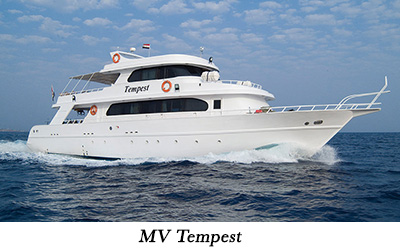 The wall dive at Ras Mohammed Marine Park, at the southern tip of the Sinai Peninsula, has unpredictable currents, so you never know which direction you're going to dive until you arrive there. For our 6 a.m. dive, we stepped, bleary-eyed, off the back deck of the MV Tempest, then the crew motored off to deeper water. Musa, our Egyptian divemaster in his mid-30s, announced we'd go in at Shark Reef and exit at Jolanda Reef. I stuck close to the reef wall at 80 feet and, pushed along by the flow, admired colorful soft corals waving gently in the current, Napoloeon wrasse guarding their territory and massive moray eels poking out from crevices. Huge schools of batfish hovered close to the wall, along with magnificent bohar snapper, which congregate en masse in springtime. Out in the blue, barracuda spiralled in a silvery vortex.
The wall dive at Ras Mohammed Marine Park, at the southern tip of the Sinai Peninsula, has unpredictable currents, so you never know which direction you're going to dive until you arrive there. For our 6 a.m. dive, we stepped, bleary-eyed, off the back deck of the MV Tempest, then the crew motored off to deeper water. Musa, our Egyptian divemaster in his mid-30s, announced we'd go in at Shark Reef and exit at Jolanda Reef. I stuck close to the reef wall at 80 feet and, pushed along by the flow, admired colorful soft corals waving gently in the current, Napoloeon wrasse guarding their territory and massive moray eels poking out from crevices. Huge schools of batfish hovered close to the wall, along with magnificent bohar snapper, which congregate en masse in springtime. Out in the blue, barracuda spiralled in a silvery vortex.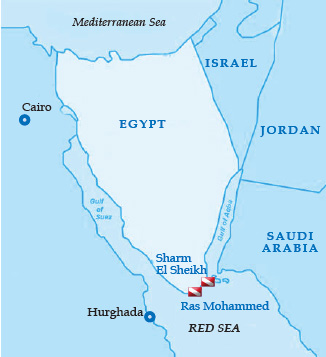 When I stepped aboard the Tempest, my heart sank. It looked very tired and in desperate need of a refit. I gamely tried for one of the luxury cabins on the upper deck, but was told the air-conditioning in them had stopped working. I bet the crew had already earmarked them for themselves. So we settled for one of the six cabins below deck, which were adequate but not spacious, with twin single beds and shabby slooking bathrooms.
When I stepped aboard the Tempest, my heart sank. It looked very tired and in desperate need of a refit. I gamely tried for one of the luxury cabins on the upper deck, but was told the air-conditioning in them had stopped working. I bet the crew had already earmarked them for themselves. So we settled for one of the six cabins below deck, which were adequate but not spacious, with twin single beds and shabby slooking bathrooms. 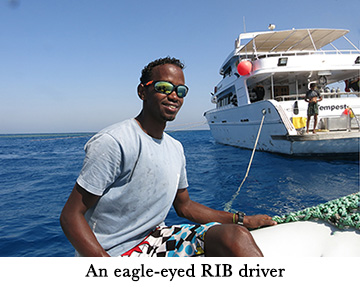 The current can be inconveniently strong outside the wreck, but diving is easy within the protection of the holds. Making it all the way to the stern section, I was rewarded with the sight of a huge anti-aircraft gun. There are even remains of a Brenn gun carrier that the German bombs hit. Out on the sand lie remains of two steam locomotives blown clear of the deck in the bomb blast. After an hour, I could hear the day boats starting to arrive from Sharm-el-Sheikh. It got difficult to remember which of a cat's cradle of up-lines led back to my boat, but I met up with my fellow divers to make a safety stop while hanging on the very crowded up-line.
The current can be inconveniently strong outside the wreck, but diving is easy within the protection of the holds. Making it all the way to the stern section, I was rewarded with the sight of a huge anti-aircraft gun. There are even remains of a Brenn gun carrier that the German bombs hit. Out on the sand lie remains of two steam locomotives blown clear of the deck in the bomb blast. After an hour, I could hear the day boats starting to arrive from Sharm-el-Sheikh. It got difficult to remember which of a cat's cradle of up-lines led back to my boat, but I met up with my fellow divers to make a safety stop while hanging on the very crowded up-line. 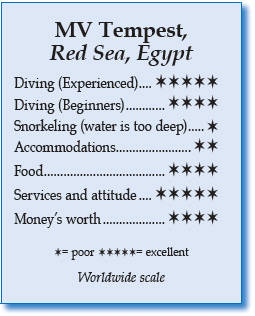 The wreck of the SS Carnatic is one of several at the big circular reef of Sha'b Abus Nuhas. A 19th Century P&O steam-sailing ship that came to grief when it ran aground, it later fell off the reef to a sandy plateau around 85 feet, where it lies on its side. The deck has long since disappeared but I loved swimming through the forest of remaining steel deck supports, and peeking down through the hole where the wooden bowsprit had been. That dive made it worth the 15-minute bumpy ride in the RIB, around from the leeside of the reef where Tempest was tied.
The wreck of the SS Carnatic is one of several at the big circular reef of Sha'b Abus Nuhas. A 19th Century P&O steam-sailing ship that came to grief when it ran aground, it later fell off the reef to a sandy plateau around 85 feet, where it lies on its side. The deck has long since disappeared but I loved swimming through the forest of remaining steel deck supports, and peeking down through the hole where the wooden bowsprit had been. That dive made it worth the 15-minute bumpy ride in the RIB, around from the leeside of the reef where Tempest was tied. There are a few trouble spots to avoid during dives. The presence of deadly poisonous stonefish encouraged me to keep me off the reef (Red Sea divers are forbidden to wear gloves in case they're tempted to hold onto the corals). It's best to avoid swimming through clouds of glassfish too, however tempting. On a previous Red Sea visit, I found out that glassfish are preyed on by lionfish -- I got stung so bad by their venomous spines I'll never forget.
There are a few trouble spots to avoid during dives. The presence of deadly poisonous stonefish encouraged me to keep me off the reef (Red Sea divers are forbidden to wear gloves in case they're tempted to hold onto the corals). It's best to avoid swimming through clouds of glassfish too, however tempting. On a previous Red Sea visit, I found out that glassfish are preyed on by lionfish -- I got stung so bad by their venomous spines I'll never forget. 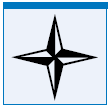 Divers Compass: I paid around $1,500 for a one-week trip on a Tornado Fleet vessel, including flights and transfer from London; extra chargers were for nitrox and alcoholic beverages . . . Tornado Fleet chartered a bus to take us from the airport to the liveaboard; while waiting for an evening flight in Hurghada, I stayed during the day at the Intercontinental Hotel . . . You should add another week in Egypt before or after diving to visit the Valley of the Kings at Luxor, the Great Pyramids at Giza and the Cairo museum . . . A dive hood is useful against a brutal sun while waiting at the surface for a pickup . . . Sharm el Sheikh has a good hospital (built for the benefit of its ex-President Mubarak) and a famous hyperbaric center; there are also hyperbaric facilities near Hurghada.
Divers Compass: I paid around $1,500 for a one-week trip on a Tornado Fleet vessel, including flights and transfer from London; extra chargers were for nitrox and alcoholic beverages . . . Tornado Fleet chartered a bus to take us from the airport to the liveaboard; while waiting for an evening flight in Hurghada, I stayed during the day at the Intercontinental Hotel . . . You should add another week in Egypt before or after diving to visit the Valley of the Kings at Luxor, the Great Pyramids at Giza and the Cairo museum . . . A dive hood is useful against a brutal sun while waiting at the surface for a pickup . . . Sharm el Sheikh has a good hospital (built for the benefit of its ex-President Mubarak) and a famous hyperbaric center; there are also hyperbaric facilities near Hurghada.
